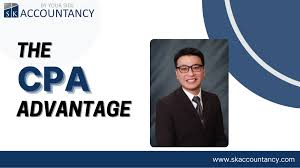You must adapt to new lease accounting standards quickly. Accountants across the nation face this challenge together. If you are an accountant in Tampa, you may encounter local nuances. But the goal remains the same. You must ensure clear, accurate financial reporting. The recent changes mean you need to recognize leases on balance sheets. This task might feel overwhelming. Yet, it is essential for transparency and compliance. You need to focus on understanding the new rules. Grasp the impact on financial statements. Remember, early preparation is key. You have to adjust systems and processes. Collaborate with your team. This will help in handling these updates smoothly. Support each other in navigating this complex shift. Paying attention to details now prevents potential pitfalls. This also fosters trust with stakeholders. Stay proactive and informed to meet these new demands. The path forward requires diligence and commitment from each of you.
Understanding the New Standards
The new lease accounting standards require a shift from traditional methods. Leases now need to appear on the balance sheet, affecting assets and liabilities. This change increases the transparency of financial statements. Stakeholders gain a clearer view of a company’s obligations. You must familiarize yourself with the specifics of these standards. The Financial Accounting Standards Board (FASB) outlines the details in their guidelines.
Key Changes to Implement
CPAs need to recognize the key changes these standards introduce. Consider the following:
- Leases longer than 12 months must appear on balance sheets.
- Differentiate between finance and operating leases.
- Use the right-of-use asset and lease liability approach.
These changes require revising current accounting practices. You need to update technological tools and systems. By doing so, you ensure accurate data management and reporting.
Comparing Old vs. New Standards
| Feature | Old Standards | New Standards |
|---|---|---|
| Balance Sheet Impact | Limited | Leases recognized |
| Lease Types | Operating and capital only | Finance and operating |
| Disclosure | Less detailed | More comprehensive |
Strategies for Implementation
Successful adaptation requires strategic planning. You need to take the following actions:
- Conduct a thorough assessment of all leases.
- Classify leases under the new criteria.
- Update accounting software to handle new data requirements.
- Train staff on the changes and their implications.
Consider collaborating with professional organizations for guidance. The American Institute of CPAs (AICPA) offers resources and support.
The Importance of Teamwork
The transition to new standards is easier with teamwork. Engage with your colleagues regularly. Share insights and resolve issues together. This approach ensures everyone stays informed and aligned. Effective communication helps in adapting to these changes smoothly.
Ensuring Long-Term Compliance
You must focus on long-term compliance. Regularly review your processes and systems. Make necessary adjustments to align with evolving standards. Continuous education plays a role in maintaining compliance. Stay updated on changes and new developments in accounting regulations.
Conclusion
Adapting to new lease accounting standards requires effort and dedication. By understanding the changes and implementing strategic measures, you ensure accuracy and transparency. The collaboration of accounting professionals supports this transition. Stay informed and proactive to achieve long-term success in financial reporting. Your commitment to these standards fosters trust and integrity in financial practices.
Read Also: Payroll Services Explained: A Core Offer ing From Accounting Firms




